Architectures and constructions in Kitakyushu-city
HOME
Kitakyushu-city is the best place for learning architecture and construction design.
There are a lot of unique construction designed by renowned architects and civil engineers,
that were constructed beginning of Japan’s Industrial modernization. The design philosophy
of designers focused on the future can be learned.
UNESCO World Heritage / First Head Office of the Steel Works
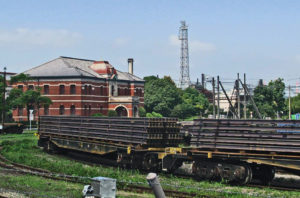 |
Built in 1899, ahead of production facilities. It is an architectural
fusion of Japanese and European design, a two story red brick
building with bilateral symmetry and a central dome set in a
Japanese tile roof. The building is registered on the UNESCO
World Heritage as Japan’s Meiji Industrial Revolution Site.
|
Kawachi Reservoir
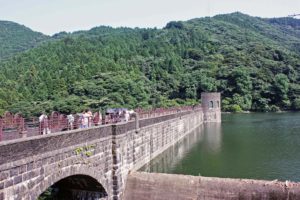 |
The first-class civil construction heritage completed in 1927, the
triggered the registration of World Cultural Heritage of Sites of
Japan’s Meiji Industrial Revolution. The Kawachi Reservoir was
constructed for the industrial water supply to Yawata Steel Works.
The dam was constructed at the Okura River and upper stream of
the dam was expanded and making the 7milion cubic metre reservoir.
|
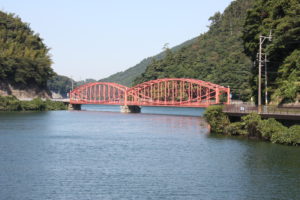 |
The only remaining lenticular truss bridge in Japan ( lens type truss
bridge), located at the south side of Kawachi Reservoir and it was
designed by Hisanori Numata and completed in 1926.
This shape and color really harmonize with nature and become a
symbol of the Iron town Yahata.
|
West Japan Industrial Club
 |
Historic Building representing modern Japanese architecture. The
building was constructed in 1911 as the former Matsumoto residence,
and was designed by renown architectural designer Tatsuno Kingo,
whose representative works was JR Tokyo Station. The building is
designated as a national cultural asset. This building is now open to
the public, and it is used as a restaurant, party and wedding reception.
|
Sankiro
 |
The largest three-story wooden building used for Ryotei in Kyushu.
Sankiro was built in 1928 and was the largest three-story wooden
building used for Ryotei in Kyushu, and was a representative building
for the time.
|
Mitsui Club
 |
Built by the Mitsui Co., Ltd in 1921 as a reception centre and to provide
accommodation for VIP’s. Designed by Shohei Matsuda Albert Einstein
(1879-1955), one of the world’s most famous theoretical physicists,
stayed here during his visit to Japan with his wife in 1922.
|
Former Mitsui O.S.K Line Building
 |
This is a wooden 2-storey building consisting of an octagonal observatory
and vivid orange-colored walls. It was built in 1917 as the Osaka Shosen
Moji Branch Office. At that time, the observatory was used for looking out
over Moji Port, and the building was utilized as a waiting room for
continental voyages.
|
Kurogane Railway
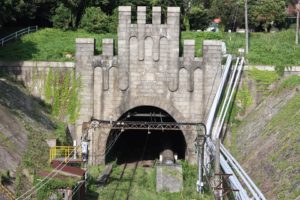 |
Dedicated Railway for Yawata Steel Works, Connected between Yawata
and Tobata. Construction work took three years, and completed in 1930.
The most difficult and hard work was making Miyatayama tunnel with a
total length of 1180 m due to suffering from floods. The gates of the
Miyatayama tunnel are decorated with stately designs.
|
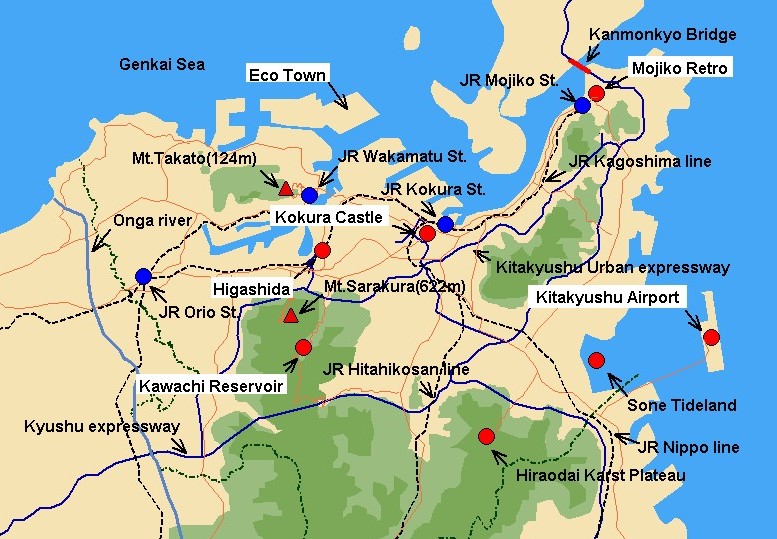
-
Study tour in Kitakyushu









